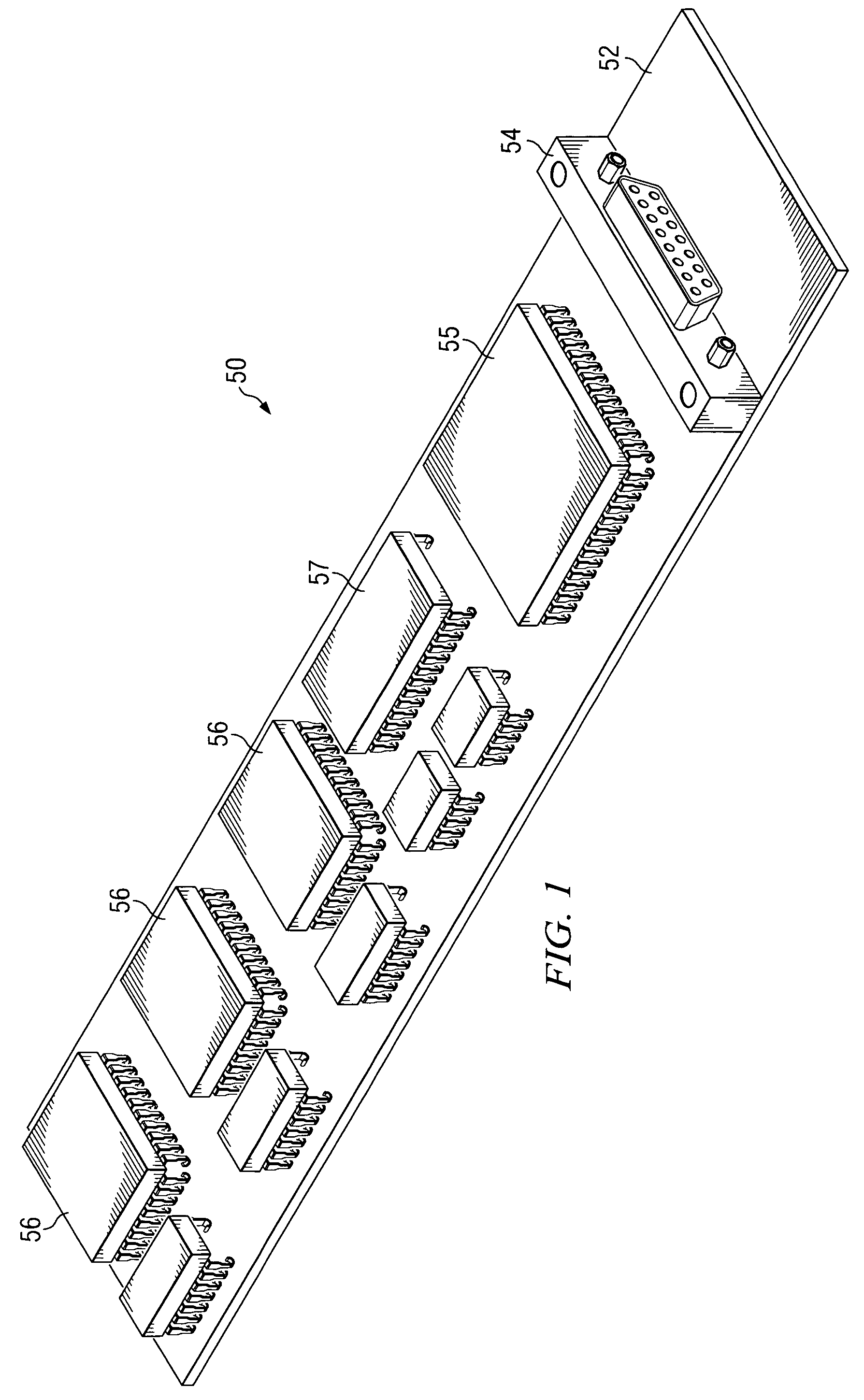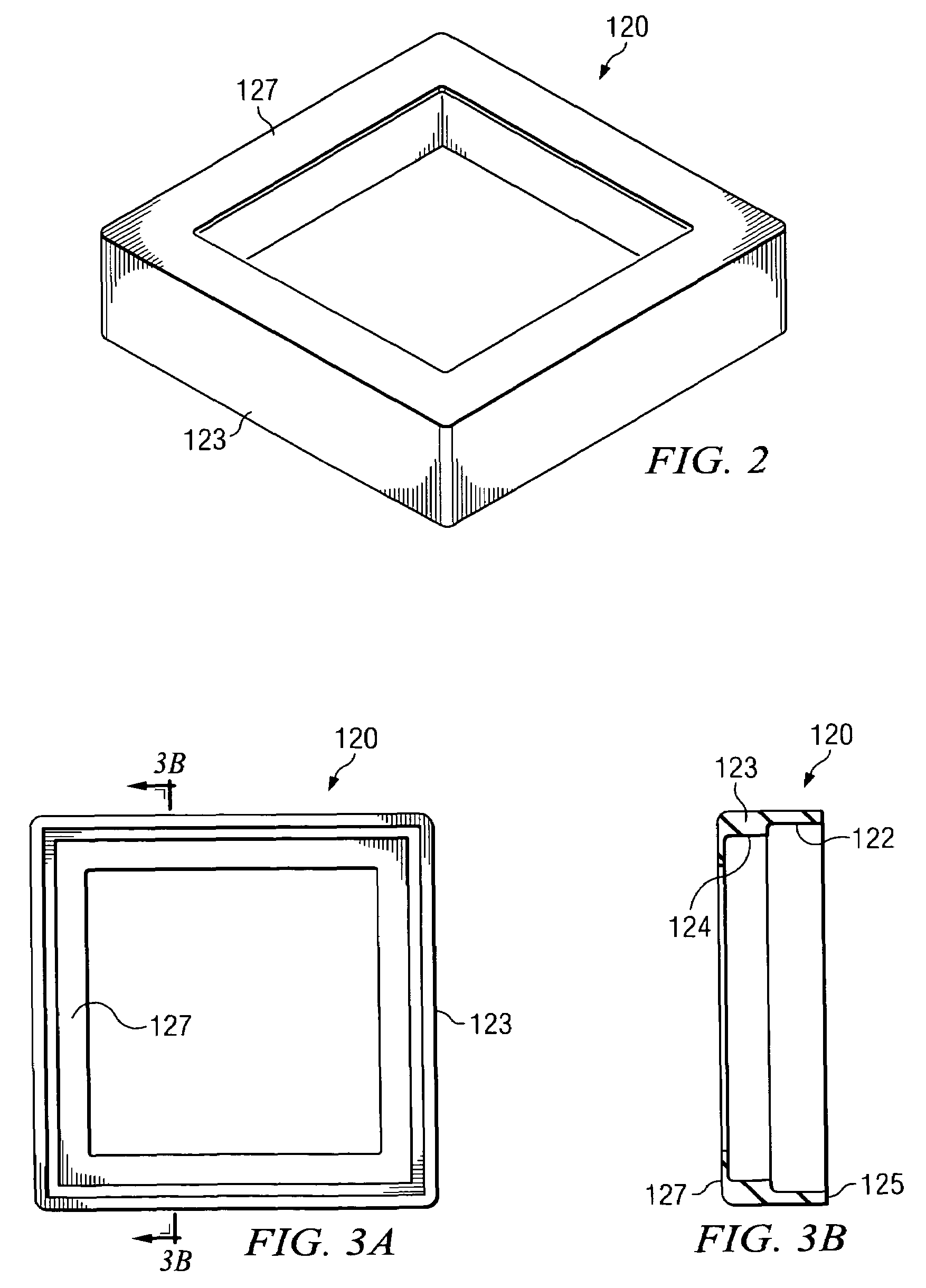Integrated circuit packages including damming and change protection cover for harsh environments
a technology of integrated circuits and protective covers, which is applied in the direction of printed circuit components, printed circuit casings/cabinets/drawers, printed circuit manufacturing, etc., can solve the problems of lateral shock and vibration, and the temporary lifting off of drill bits from the formation, so as to prevent the migration of conformal coatings and/or encapsulation materials. , to eliminate static charge problems, improve the reworkability of downhole electronic assemblies
- Summary
- Abstract
- Description
- Claims
- Application Information
AI Technical Summary
Benefits of technology
Problems solved by technology
Method used
Image
Examples
Embodiment Construction
[0027]Referring first to FIGS. 1 through 7, it will be understood that features or aspects of the exemplary embodiments illustrated may be shown from various views. Where such features or aspects are common to particular views, they are labeled using the same reference numeral. Thus, a feature or aspect labeled with a particular reference numeral on one view in FIGS. 1 through 7 may be described herein with respect to that reference numeral shown on other views.
[0028]Turning now to FIG. 1, an exemplary electronic assembly 50 upon which exemplary damming boot embodiments 120 (FIG. 2) of this invention may be deployed. Electronic assembly 50 includes a circuit board 52 (such as a conventional printed circuit board) having a plurality of integrated circuit components 55, 56, and 57 soldered thereto. The assembly 50 further includes an electronic connector 54 for making electronic connection to various other downhole devices. Electronic assembly 50 (and therefore circuit board 52) may b...
PUM
 Login to View More
Login to View More Abstract
Description
Claims
Application Information
 Login to View More
Login to View More - R&D
- Intellectual Property
- Life Sciences
- Materials
- Tech Scout
- Unparalleled Data Quality
- Higher Quality Content
- 60% Fewer Hallucinations
Browse by: Latest US Patents, China's latest patents, Technical Efficacy Thesaurus, Application Domain, Technology Topic, Popular Technical Reports.
© 2025 PatSnap. All rights reserved.Legal|Privacy policy|Modern Slavery Act Transparency Statement|Sitemap|About US| Contact US: help@patsnap.com



